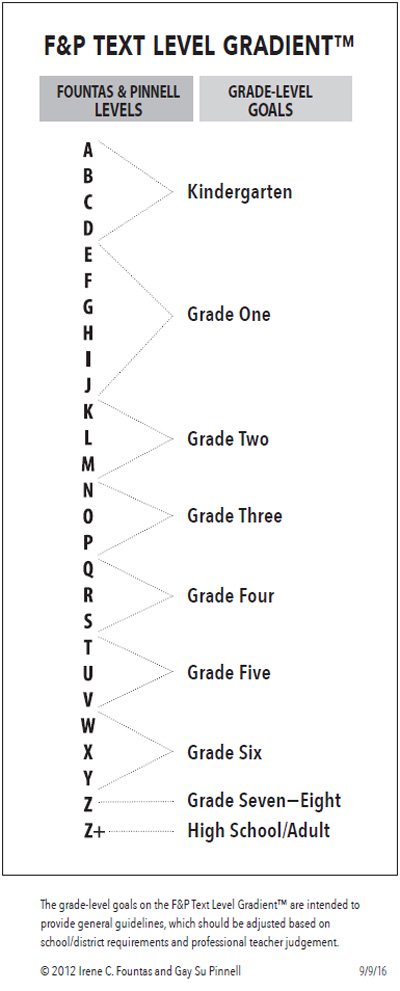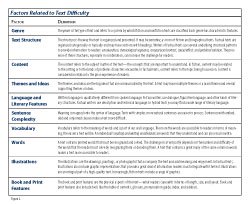![]()
![]()




Reading is a highly complex process. Readers must build a system of strategic actions for processing texts A–Z+ that begins with early reading behaviors and becomes a network of strategic actions for reading increasingly difficult texts. The F&P Text Level Gradient should be seen as a continuum of progress for readers.
The F&P Text Level Gradient™ is the most recognized and trusted tool for selecting books for small-group reading instruction. All of Fountas and Pinnell's work references their F&P Text Level Gradient™—often referred to as Guided Reading levels or Fountas & Pinnell levels—beginning with the publication of Guided Reading: Good First Teaching for All Children, and extending to the publication of The Fountas & Pinnell Literacy Continuum, the Benchmark Assessment System 1 and 2 and the Leveled Literacy Intervention Systems.
Fountas and Pinnell's goal is to support the child's development of self-initiating actions he will be able to apply to a range of texts of similar difficulty. With daily teaching, the teacher helps the child climb the ladder of text difficulty with success. The goal of guided reading is to bring the child to the level of complex texts appropriate for the grade, in doing so, teaching must begin with where the child is able to engage with some success, so that there is a point of contact, thereby engaging the child's development of a self-extending system for processing texts.

This document defines the ten text characteristics from The Fountas & Pinnell Literacy Continuum, which are the main factors related to text difficulty. Studying the text characteristics of books at a given level will provide a good inventory of the challenges readers will meet across that level. These ten text factors are important to consider when selecting texts for any kind of reading instruction.

The full version of this resource requires registration.